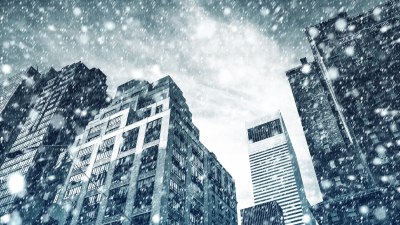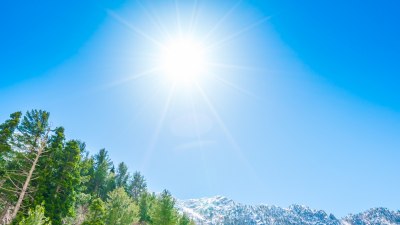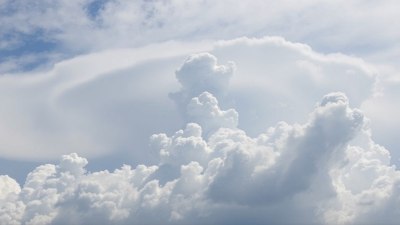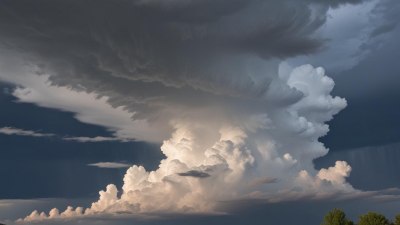Snowstorms That Made History and Shut Down Entire Cities
Explore historical snowstorms that paralyzed cities, shaping lives and infrastructure.

The history of snowstorms is rich with tales of unexpected mayhem and extraordinary resilience. Various snowstorms across the globe have left imprints on cities, altering their landscapes and challenging their inhabitants. In this article, we will delve into notable snowstorms that not only created challenges for the cities they struck but altered the way people prepare and respond to winter weather. These historical events serve as poignant reminders of nature's power, the unpredictability of weather systems, and the human spirit's capacity to endure even the most severe conditions.
The Great Blizzard of 1888
One of the most infamous snowstorms in American history is the Great Blizzard of 1888, sometimes referred to as the Great White Hurricane. Taking place from March 11 to March 14, this storm affected the eastern United States, particularly New York City. It dumped an astonishing 40-50 inches of snow across the region, accompanied by fierce winds reaching up to 80 miles per hour. The storm's impact was catastrophic, leading to the deaths of over 400 people. Public transportation was paralyzed as the snowdrifts reached heights of 20 feet in some areas, rendering streets impassable.
New York City and Beyond
New York City found itself at a standstill. Trains were unable to operate, schools were closed, and people were trapped in their homes. In response to this disaster, city officials recognized the need for better urban planning and emergency response strategies. The blizzard highlighted the vulnerability of the city to natural disasters, prompting leaders to invest in infrastructure improvements like better snow removal techniques and communication systems.
The Blizzard of 1978
The Blizzard of 1978 remains etched in the minds of those who experienced it, especially in the Northeastern United States. Occurring from February 6 to February 8, the storm accumulated over 27 inches of snow in Boston and garnered winds that whipped through the city at speeds of up to 65 mph. The intense snowfall and wind led to massive snowdrifts that blocked roadways and caused roof collapses in various buildings.
Devastation and Recovery
More than 4,500 cars were abandoned, and thousands of flights were canceled, resulting in major disruptions to transportation. The blizzard led to the deaths of around 100 people, mainly due to accidents and exposure. In its aftermath, the region saw a remarkable mobilization of resources for recovery efforts. People came together to help clear snow and restore normalcy, demonstrating the effects of community solidarity in the face of adversity.
Snowmageddon: The Blizzard of 2010
The term 'Snowmageddon' refers to the massive snowstorm that hit the East Coast of the United States in February 2010. This robust winter storm brought record-breaking snowfall to cities like Washington, D.C., where over 55 inches fell in a series of storms within a short period. The snowfall amounted to an unprecedented disruption of daily life—government offices were closed, businesses shut down, and public transportation ground to a halt.
A City Grounded
Washington D.C. faced significant logistical challenges as snow plows struggled to keep up with the volume of snow. The city's inadequate infrastructure for severe winter weather contributed to severe delays in recovery efforts. Residents quickly realized the necessity for improved emergency plans to deal with snowstorms of such magnitude. As public services faltered, community groups emerged to assist those in need, delivering food and supplies to homebound individuals.
The Blizzard of 1996
The Blizzard of 1996 is another historical snowstorm that significantly impacted the Mid-Atlantic region, particularly affecting the states of Maryland, Virginia, and the District of Columbia. Over the course of January 6-8, the region received 20-30 inches of snow, with some areas recording unprecedented depths of snow. Snow removal efforts were hampered by freezing temperatures that followed the snow, turning it into a solid mass on the roadways.
Impact on Society
Schools were closed for an extended period, and businesses were forced to shut down due to the lack of transportation options. The aftermath led many cities to realize the importance of investing in advanced forecasting technologies for better planning and response. The blizzard sparked discussions about climate change and its effects on weather patterns, emphasizing the necessity for cities to adapt to more frequent and extreme weather events.
Winter Storm Jonas of 2016
Winter Storm Jonas, which struck in January 2016, was one of the most powerful snowstorms to affect the East Coast in recent history. This storm, which was named Jonas, left an indelible mark on cities, as it produced record snowfall totals exceeding 30 inches in places like Maryland and Virginia. Major cities like Philadelphia and Washington, D.C. were marred by blizzard-like conditions that led to travel bans and extensive closures.
Historical Lessons
Winter Storm Jonas also highlighted the importance of proactive measures for snow management and emergency preparedness. Cities began reevaluating their response plans and the necessity for better public communication during severe weather events. The aftermath of Jonas emphasized that residents needed to be informed about evacuation plans and snow emergency protocols.
Snowstorms and Urban Infrastructure
Many of these snowstorms have confronted cities with common infrastructural challenges that compel local governments to integrate weather resilience into long-term city planning. Historically, cities that have managed these weather events effectively often have had extensive snow removal processes, public awareness campaigns, and well-funded emergency management services in place at the onset of winter.
Climate Impact
The increase in the frequency of these major snowstorms has prompted research into climate change and its role in altering weather patterns. While climate change may lead to milder winters in some areas, it often results in larger snow events in others. Meteorological studies show that warming temperatures can lead to increased moisture in the atmosphere, contributing to heavier snowfall during winter storms.
Conclusion
Snowstorms are not merely meteorological events but rather historical milestones that reflect the capacity of cities and their populations to adapt and respond to extraordinary challenges. While the snowstorms that have affected urban areas created hardships, they also ignited improvements in infrastructure, emergency planning, and community solidarity. Understanding historical snowstorms allows us to prepare better for the future while fostering a sense of shared experience and resilience among communities facing the wrath of nature.











